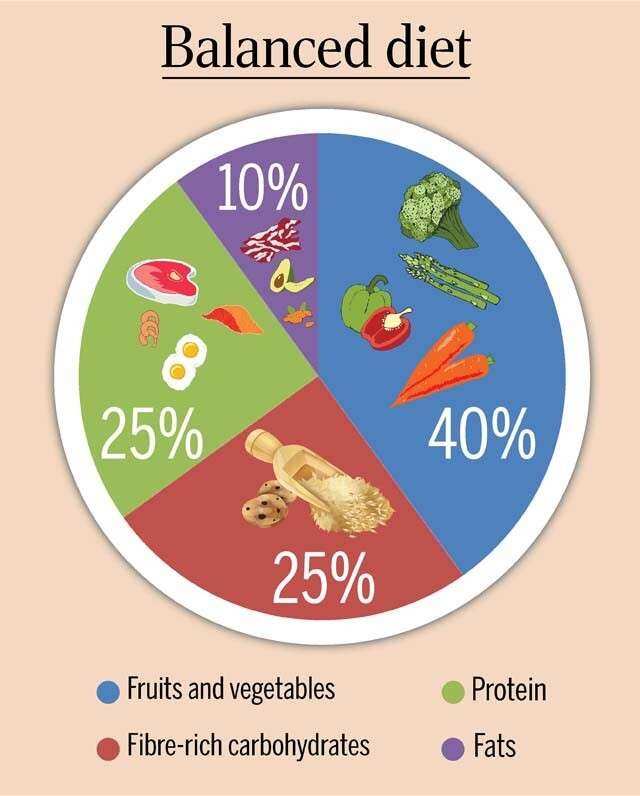
The concept of a balanced diet chart has existed long before nutritionists and dieticians started expounding its virtues. Our ancestors traditionally ate meals with an emphasis on balancing all nutritional elements and food groups, an aspect that has been diluted with time and lifestyle changes. So what exactly does a balanced diet entail? The dictionary defines it as a diet comprising a variety of different types of food and providing adequate amounts of the nutrients needed for good health. So the keyword here is balance – everything must be consumed in balance, and in proportion to what the body needs.
There are four key essential nutrients that make up a balanced diet. Top of the list are fruits and vegetables, which need to be consumed everyday in vast quantities. Proteins, fibe-rich carbs and good fats make up the other three components to a balanced diet. Let’s take a look at the benefits of each of these, and the best ways to incorporate each of them in your diet.
Fruits and vegetables
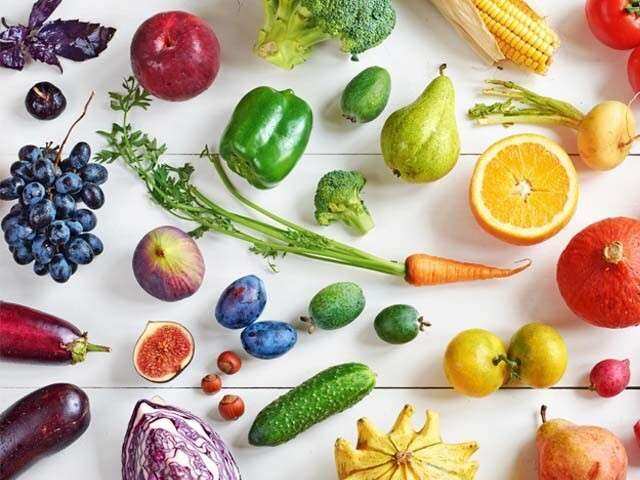
At least forty percent of your nutritional intake everyday has to be through fruitsand vegetables. It is ideal to ensure that every meal includes a colourful assortment of veggies and fruits, but if this is difficult to implement you could cover it over the span of a week. By doing this each day, you get an adequate supply of vitamins, minerals, potassium, folate, antioxidants and so on, without compromising on quantity or quality.

Berries: Berries, especially blueberries and blackberries are enriched with antioxidants called anthocyanins, which are extremely good for the body. These anthocyanins fight off the free radicals in your system, enhance cell health and soothe inflammation, which is the root cause of most health problems. They can prevent various cancers, as well as heart problems like blood pressure, fight off obesity and keep bad cholesterol at bay. They can also enhance liver health and prevent urinary tract infection (UTI).
Pro tip: Eat a generous helping of berries as part of your breakfast, to kickstart your day with antioxidants.
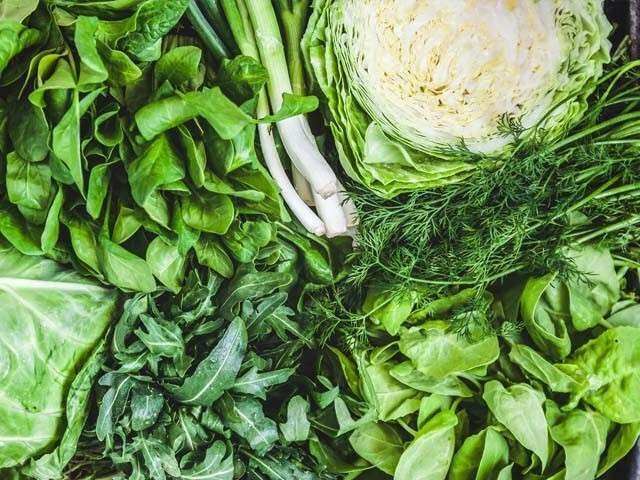
Leafy green veggies: When grandma told you to eat your greens, she definitely knew what she was talking about! Green veggies are the ultimate detox ingredients, which shed the body of environment, stress and lifestyle-related toxins that accumulate. They are also rich in chlorophyll, a characteristic that is unique only to them – no other food colour can boast this. Chlorophyll is nature’s way of combating oxidants in the bloodstream, and effectively neutralising them. Broccoli is especially a good source, so be sure to include a good quantity in your diet at least twice a week. Greens also boast a treasure trove of nutrients – calcium, magnesium, potassium, omega 3 fatty acids, vitamins and minerals. They are also the ultimate alkaliser (think cucumber, bottle gourd, spinach) which balance the body’s pH levels and keep acidity at bay. Include spinach, avocado, kale, arugula, asparagus, Brussels sprouts, cabbage, beans, celery, cucumber, zucchini, bottle gourd, bitter gourd, peas, green pepper, leek, lettuce, assorted herbs like parsley, mint, basil and thyme in your diet.
Pro tip: Have a bowl of green vegetables everyday to purify and alkalise your body.
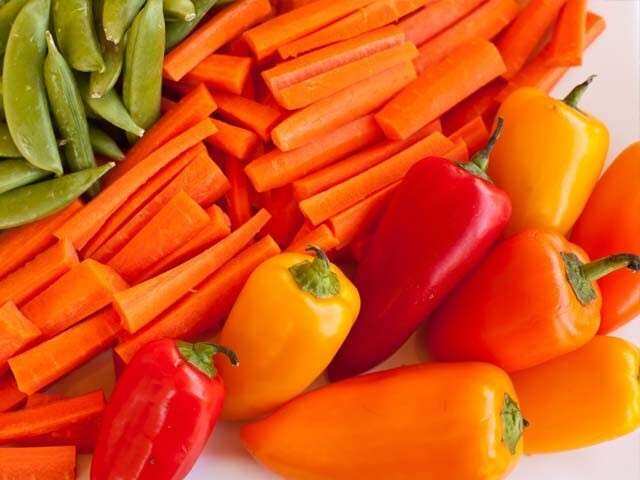
Caretonoid-rich veggies: Seeking to include these in your diet can improve your mental wellness levels and be an instant mood booster! They are also fibre-rich and keep cancer causing cells at bay. Yellow and red bell peppers are particularly good for this, as are sweet potatoes, pumpkins and other squashes.
Pro tip: Eat a variety of veggies rich in caretonoids at least thrice a week to boost your mood.
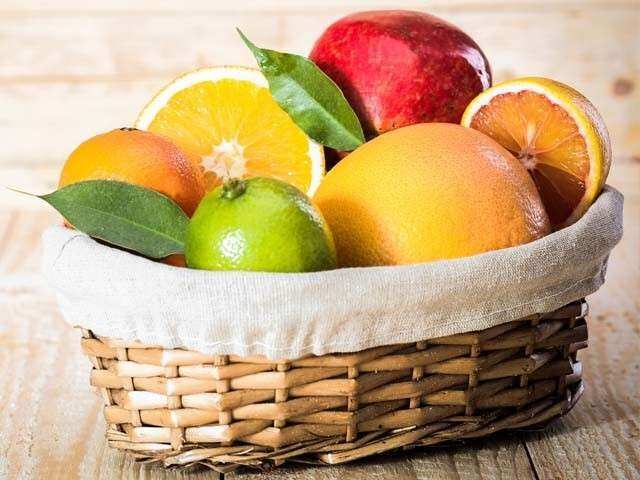
Vitamin C rich fruits: This is important, because it is the only vitamin that the body does not naturally produce, and so needs an external source for. In addition to this, they aid eye health, preventing cataract formation and macular degeneration. This is because of the high levels of zeaxanthin. They promote the body’s production of collagen, an important anti-ageing component, and also balance the body’s pH levels. Vitamin C helps the body absorb iron better, and detoxes the digestive system, metabolising bile in the liver, causing oxidisation within the body. It is also used to heal tissues and muscles in the body. It metabolises free radicals, eliminating them from the body, and keeps weight gain at bay. Eat oranges, nectarines, peaches, lime, lemon and grapefruit for maximum benefits.
Pro tip: Keep ageing at bay while digging into a small helping of Vitamin C once a day.
Other must-haves
Fruits like the humble banana contain potassium, which is a key nutrient to the diet, while an apple a day does keep the doctor away thanks to its multiple health benefits! Pomegranates are beneficial for just about everything – from being antioxidant-rich to aiding metabolism, and tomatoes contain lypocene, which prevents cancer and is heart healthy. While leafy green vegetables are the best, don’t ignore others like beets, brinjals, onions, garlic and so on.
Pro tip: Include a vast variety of fruits and vegetables in your diet, making sure you get the essential ones at least once a week.
Protein
Twenty five percent of your daily nutritional intake should ideally come from healthy proteins found naturally (no shakes or powders please!). To begin with, let’s understand the TEF or Thermic Effect of Food, which is caused when you eat. The body uses its extra calories to process and digest this food. Of all the food groups, protein contains the highest TEF, potentially bringing it up to a whopping 30 percent, which is ten times more than the maximum of 3 per cent that fats offer. Protein is also a filling option, particularly animal sources of protein, so this prevents binge fests on unhealthy offerings, and makes sure your tummy feels satisfied in a good way. Protein is also a key nutrient in muscle-building, so when you take in a protein-rich diet, it helps convert fat to muscle, which in turn increases metabolism. So you’ll eat less, burn more, and stay strong – a win-win situation from every angle.

Dairy: One of the most common and accessible sources of protein is dairy. This includes milk, various varieties of cheese (including paneer), butter, yoghurt and so on. Not only does dairy give you the benefits of protein, it also ensures your body is fortified with calcium and vitamin D. Milk contains two kinds of protein – whey (20 percent) and casein (80 percent), which contain essential amino acids. Dairy is, in fact considered one of the most high quality sources of protein. If cow’s milk doesn’t agree with you, try goat’s milk which is lighter.
Pro tip: It is recommended to have at least three cups a day of dairy in various forms such as milk, cheese or yoghurt.
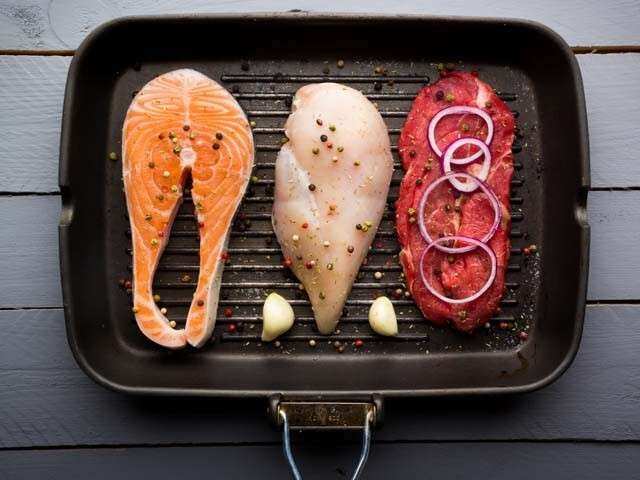
Meat and seafood: If you’re eating meat or seafood-based protein, around 40-50g need to be consumed per day, per adult female on an average. The best sources are eggs, chicken, turkey, fish (cod, mackerel, trout), seafood (shrimp, prawns, crabs). Pork and lamb are also good sources of meat. Remember to source your meat from a reliable vendor, to cook it well and avoid deep-frying it.
Pro tip: Consume 50g of meat or seafood per day to add sufficient protein to your diet.
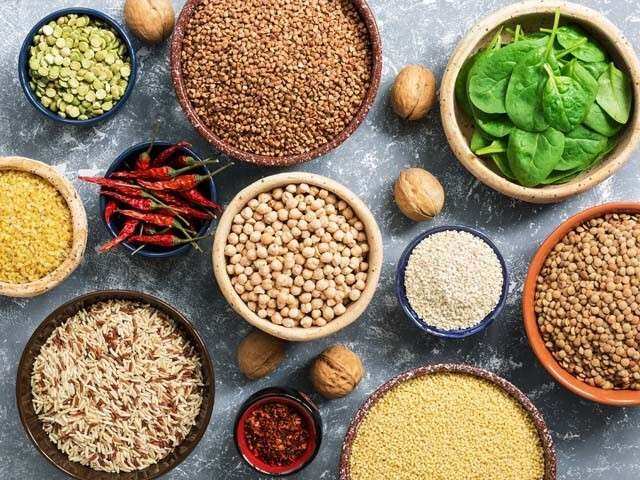
Vegan protein sources: All kinds of beans, legumes and lentils are great sources of plant protein, which offer the same benefits as animal protein. In addition, these have the benefit of being rich in fibre, which is vital to digestion and thereby enabling the efficient breakdown of food. Legumes contain an amino acid called arginine, which helps the body burn more carbs and fat than otherwise. Just half a cup of tofu has about 20 g of protein, which is almost half of your daily dietary requirement. While legumes are great sources of protein (chickpeas, dals, kidney beans and so on), often overlooked in the legume family are fresh green peas. In fact, a cup of peas has almost the same protein content as a cup of milk! When you snack on seeds, you’re packing in loads of nutrition from nature, including protein and fibre. Chia, pumpkin, sesame and sunflower seeds are some of the more protein-rich varieties, which can be used as a dressing to any dish, blended into a soy milk smoothie, or just had straight out of the box! A tablespoon has about 10-20 percent of your daily protein requirement.
Pro tip: Get a mix of beans, legumes, lentils and seeds into your diet, as these make for great sources of vegan protein.
Carbohydrates

Carbs are not on anyone’s radar these days, with most people cutting them out entirely! But these are important because they’re your energy source. There are three kinds of carbs – sugars, starches and fibre. Common sense decrees that you cut down the sugars (unless they occur naturally in fruits, honey, etc), eat starches in moderation, and consume fibre as much as possible! Choose whole grains like oatmeal, buckwheat, quinoa, barley, rye and so on, which are an important source of B vitamins and complex carbohydrates that keep your energy levels going. These are also rich in fibre and increase your metabolic levels. They lower blood sugar levels, and also keep the gut cleansed and in good shape. Want a healthy carb-based lunch? Watch this video for a healthy quinoa biryani recipe!
Bananas, sweet potatoes and beets are starchy, but the good kind of starch – found in nature!
Pro tip: Eat high-fibre carbs for maximum benefits and to boost gut health.
Fats
While fats have got a bad rep in diet circles, it’s important to understand that they’re an essential component to help the body store energy, and use up nutrients. They’re great for overall bone, muscle and skin health. But you also have to remember that not all fats are good; likewise not everything is poison. Fats are micronutrients, with each molecule being made of one glycerol molecule and three fatty acids. These can be either saturated, monosaturated, or polysaturated, depending on the number of double bonds. Trans fats are not found in nature, and are a separate category altogether.
Saturated fats
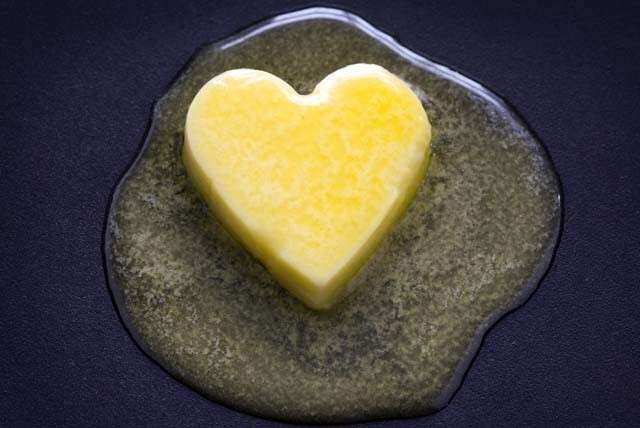
These are fats with no double bonds, which means all carbon atoms are saturated with hydrogen atoms. Foods rich in saturated fats include fatty meat, full-fat dairy, coconut and coconut oil, palm oil and so on. While scientists have found a link between heart trouble and an increased intake of saturated fat, there is still no concrete evidence that this is the cause. The key benefit of saturated fats is that they are great for cooking. Because they have no double bonds, they are resistant to heat damage. So whether it is frying or any other method of cooking that involves high heat, you needn’t worry about this component if you’re using saturated fats.
Pro tip: Use oils rich in saturated fats for cooking, since these are resistant to heat damage.
Unsaturated fats
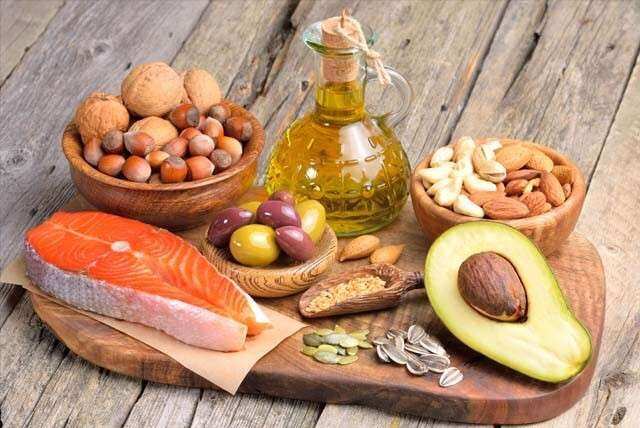
These are the healthiest fats on the market, divided into two types – monounsaturated and polyunsaturated fats. Monounsaturated fats have one double bond, and are found in nature in olive oil, Avocados, nuts and seeds. They boost energy levels, aid weight loss, reduce heart disease and decrease stomach inflammation. They aid metabolic syndrome, help reduce blood cholesterol and triglycerides, lower blood pressure, benefit people with type 2 diabetes, and can even reduce cancers like prostrate cancer, breast cancer and so on. Generally, foods that contain monounsaturated fats like olive oil are liquid at room temperature, while those that contain saturated fats like butter, are solid at room temperature. Get your intake through a handful of nuts and seeds each day – cashews, almonds, peanuts, pistachios, olives, pumpkin seeds, sunflower seeds and so on. Eggs are another great source of monounsaturated fats, so is pork.
With polysaturated fats, the molecules, as the name suggests, possess two double bonds. Seafood – especially fatty fish – is one of the richest sources. If you’re vegetarian, opt for peanut oil, soybean oil, sunflower oil, unsweetened peanut butter, canola oil, walnuts, sesame seeds, seaweed and even whole grain wheat. Omega 3 fatty acids and Omega 6 fatty acids are found in polyunsaturated fats in large amounts, which are a vital component of skin health, bone health, heart health and neurological disorders. Try out this dish, which combines healthy fats, protein and veggies too!
Pro tip: Reach for nuts (cashews, almonds, pistachios, peanuts), cold-pressed oils, avocados, ghee, fish, eggs, coconut, seeds and dairy as your sources of fat.
Trans fats
Nutrition is a subject often open to debate, but the one thing that everyone agrees on, is that trans fats (or trans fatty acids) are bad for you. Not very commonly found in nature, trans fats have double bonds in heir hydrocarbon chains, as opposed to no double bonds where saturated fats are concerned. These are mostly artificial fats that your body doesn’t recognise. They remain in your blood unprocessed, and clearing it usually means using up HDL or High Density Lipoprotein. Now given that HDL is the good fat you’re trying not to lose, this is bad news. HDL cholesterol acts as a scavenger, clearing out other harmful fats and sending them to the liver. It keeps the inner wall of the blood vessels clean. So when you use up excess HDL, the depleting levels can cause bad cholesterol and blood pressure.
Pro tip: Avoid foods with transfats like the plague – processed food, junk food and those high in processed sugars are the worst offenders!
FAQs

What foods should I avoid for a balanced diet?
Most of this is common sense! Foods you should avoid obviously include low-nutrient and high-fat foods – sugar-rich desserts and sugary sweets, deep-fried foods, alcohol, packaged foods, foods rich in trans fats, refined grains, excessive red meat intake, excessive salt intake and so on.
Do I need to drink water?
Water is often overlooked because it contains no real nutrients. But when you drink enough water, you’re hydrating, and removing byproducts of fat from your system. It is a great metabolism booster, keeps kidney health in check, keeps ailments like Urinary Tract Infection (UTI) at bay and reduces the risk of kidney stones. It balances digestive health, maintains heart health and keeps acid reflux at bay by neutralising the pH balance in the body. Colds and coughs, allergies like asthma and other dust and food-related allergies can also be kept at bay. The average Indian woman ideally needs to consume 2.5-3 litres of water a day.
What else can I do to supplement a balanced diet?
A balanced diet needs to be supplemented with a healthy lifestyle for it to be truly effective. So start easing off the stress, get 7-8 hours of sleep a day, eat on time, and most importantly – get enough exercise into your schedule.
[“source=femina”]
